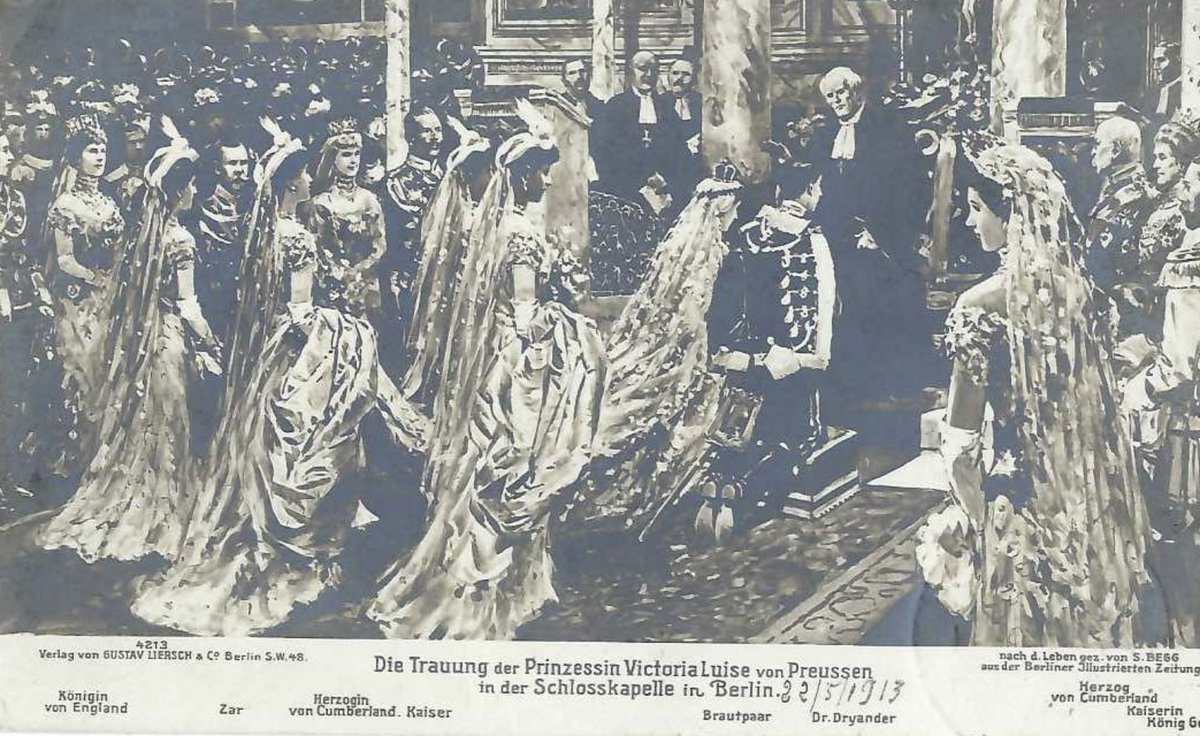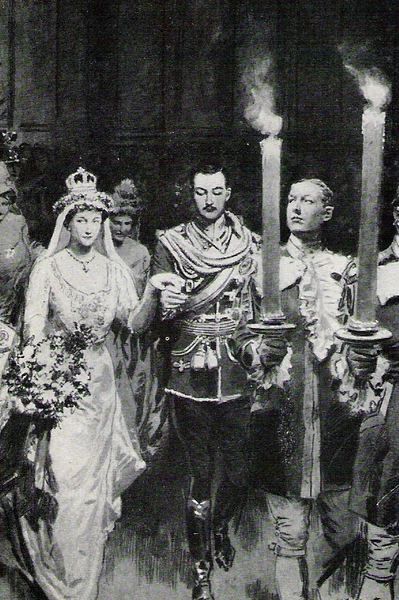Colorized by me: Cousins Tsar Nicholas II and King George V in German military uniforms, Berlin, 1913.
This picture was taken during the wedding of the Kaiser’s daughter Princess Victoria Louise of Prussia.

This picture was taken during the wedding of the Kaiser’s daughter Princess Victoria Louise of Prussia.


Tsar Nicholas II is in the uniform of the Westphalian Hussars and King George V in the uniform of the Rhenish Cuirassiers – their respective German regiments.
The wedding took place on 24 May, and became the largest gathering of reigning monarchs in Germany since 1871, and one of the last great social events of European royalty before WWI began 14 months later.
The wedding feast included 1,200 guests.
bit.ly/3E53TvH
The wedding feast included 1,200 guests.
bit.ly/3E53TvH

Wedding Banquet at the Royal Palace Berlin.
(Left side of the table): Facing the butler is Kaiser Wilhelm II and then, to his right, Queen Mary of the United Kingdon, the Duke of Cumberland (Groom's father) and Crown Princess Cecillie.
(Left side of the table): Facing the butler is Kaiser Wilhelm II and then, to his right, Queen Mary of the United Kingdon, the Duke of Cumberland (Groom's father) and Crown Princess Cecillie.

To the Kaiser's left is Crown Prince Wilhelm and then the Grand Duchess of Hesse. (Right side of the table): From right to left, Princess Eitel-Friedrich (Kaiser's daughter-in-law), King George V of the United Kingdom, Kaiserin (Empress) Augusta Victoria...
... the groom Prince Ernest Augustus of Cumberland, the bride Princess Victoria Louise of Prussia, Tsar Nicholas II of Russia, the Dowager Grand Duchess of Baden, and Prince Waldemar of Denmark.
Print available: redbubble.com/shop/ap/347079… 

On the menu, Schildkrötensuppe (Turtle Soup) and Schinkauflauf mit Frischen Morcheln (Casseroled ham with fresh morels), among other dishes.
This wedding banquet was the last time the German Emperor and the King of England would socialise with each other before, just one year later, each would lead his country against the other in World War I.
Read more: royal-menus.com/kaisers-3/c
Read more: royal-menus.com/kaisers-3/c

• • •
Missing some Tweet in this thread? You can try to
force a refresh















